Who better to ask than other ABM practitioners about their biggest ABM challenges?
That is what we have done over the course of the last four years on our ABM Lunch & Learn workshop.
More than 300+ B2B Marketing teams have attended these workshops to either explore launching an ABM strategy or to enhance their current one.
Before attending the workshop we ask attendees - "What are your biggest ABM challenges that you are looking to solve?"
This video answers the top 10 ABM challenges they have shared with us.
Declan: Today we're going to talk about the Top Ten ABM challenges and how to overcome them.
And I'm delighted to be joined by my colleague Fes Askari, who's our Director of Sales
at the Agency.
So a little bit of background for everyone - Fes and myself have been running ABM Lunch and Learn Workshops for about a year and a half now.
We’ve run approximately 120 -130 to-date, to B2B technology brands who are looking either to explore ABM in the first instance, or secondly, to enhance their current ABM program.
So we've got a wealth of information about what those programs are, what their challenges are, what they're looking to achieve, what they're looking to solve, etc.

So we thought it would be great to share those insights and give you some data and perhaps give you some ideas about how to overcome some of the challenges that you will face, and a little bit of a road map really to help you on your ABM journey.
So let's kick off.
What we've actually done is taken the data from all these ABM Lunch and Learn workshops, and one question we asked every single guest was ‘What is your biggest ABM challenge?’
So let's look at the top ten ABM challenges in reverse order, starting with the number 10.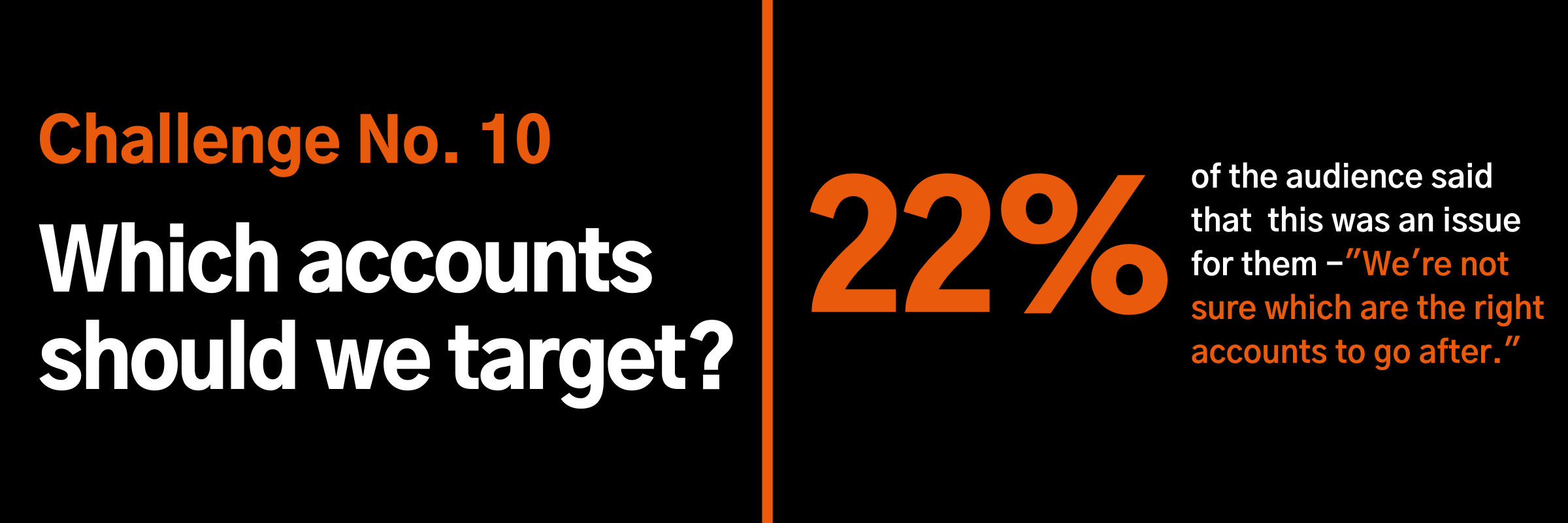
So Fes, how would you answer that one?
Fes: Yeah. I think it's a really good question. I think it goes back to the crux of ABM being more of a business strategy rather than just a marketing campaign, and really thinking about inviting all of the key stakeholders from Marketing and Sales, to commercial products to have a say in the account selection process.
There are a number of considerations, and some teams do some great work in terms of account selection.
But for example, you don't want to build an ABM strategy around the product that might be going out of scope in the next 18 months, right? So you need to have the product view of the strategy there.
You might need to prioritize your commercial objectives, so you might have certain products that the business wants to sell more of in the next 18 months.
You need to understand what those growth objectives look like.
And again, everybody in the business will have their view of account selection,
but you also want to back this up with the data that you have available.
That could be internal first-party data, it could be external third-party data, intent data and things like that, to help validate this thinking.
What's your view on that, Dec?
Declan: I think just trying to bring that data set together from what you've got internally in the organization through your CRM, identifying what businesses you're seeing on your website, we use something called Leadfeeder which is great to track those anonymous visitors and try to de-anonymize them.
And then third-party data, intent data platforms that are out there.
I think an important thing to bear in mind with this data, and particularly the intent data, is to be a little bit careful - you need to have more than one source of intent.
I mean, one of the guests on the Let's talk ABM podcast that we run, Danny Nail, who's over at Salesforce said ‘always look for three sources of data for intent. Otherwise, one source of data for intent is just interest.’
I think that's a key thing.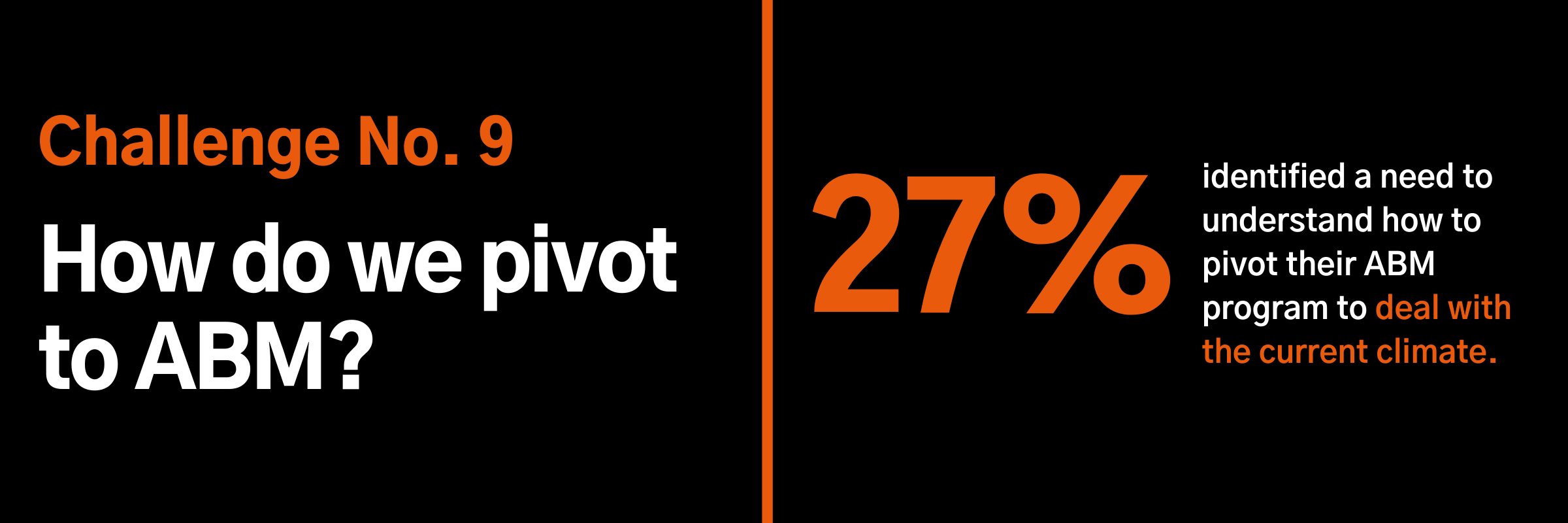
Fes: I mean, part of this just goes back to doing good marketing and doing your research, and doing persona development, and understanding how your customers buy today.
Some industries have been more impacted than others. Some industries are currently going through a bit of a flux period in terms of online activities and events.
And so you just need to be really aware of your customer buying behavior over the last few years and coming out of this pandemic period. The way buyers buy has changed,
the way sellers sell has changed and the way marketers market needs to change and adapt as well.
There are different channels and considerations that we should think about, teams are becoming more digital, buyers are becoming more digitally savvy in terms of the resources
that they can tap into.
But there are differences in industries that are slightly more traditional or field-based versus more SaaS-type companies.
So you just need to do your research and do your homework and update that insight on a more regular basis. I would say, you know, monthly or quarterly.
You need to be in those customer conversations and hear the voice of the customer.
What's your view?
Declan: Well, I think I just would echo what you said, really.
I think always be looking at your account selection, always be looking at your ICP, have a regular cadence of looking to refresh it because we learned from two years ago
with the beginning of the pandemic that certain industries literally turned the tap off overnight.
Those industries actually are coming back very strongly now in terms of tourism and in terms of restaurants, hotels, etc.
So always be aware of what's going on and just keep a refresh option, always. Regular
a three to six month review is very healthy.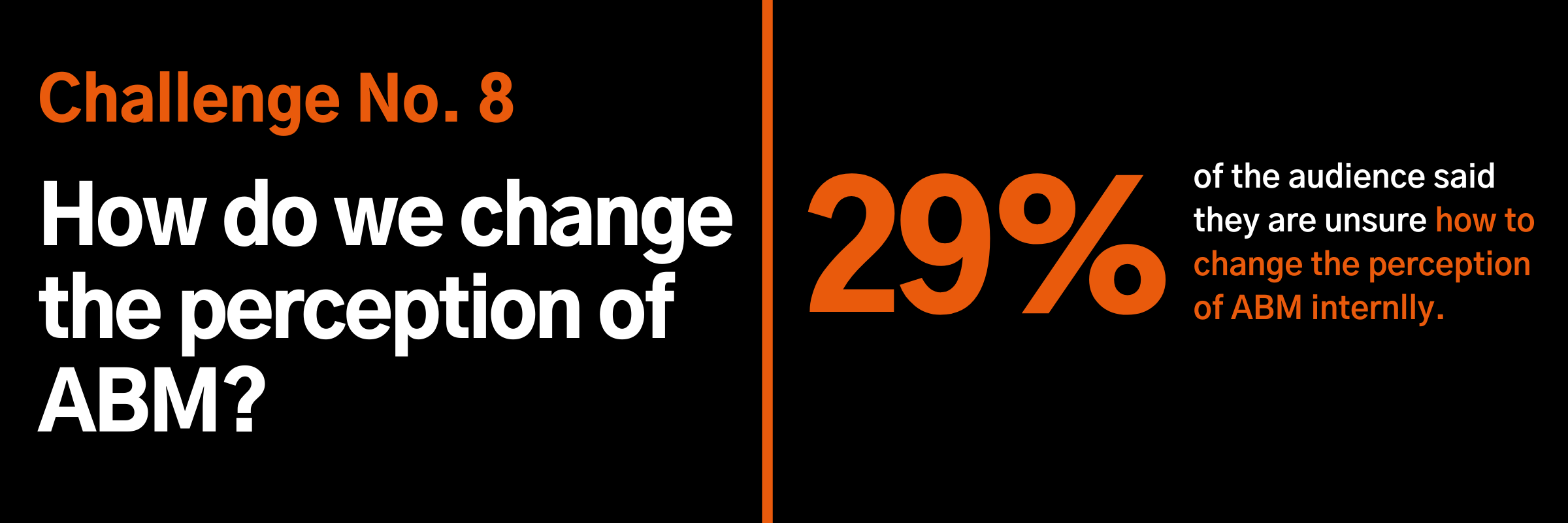
Declan: So I think I think I could probably answer that. I think the key thing there is to say
with ABM, perhaps the ‘M’ is a little bit unfortunate for some people depending on the perception that Marketing may or may not have in your organization, but I think if you talk about it as an Account strategy, that makes a lot more sense.
Our advice to our clients always is to use the language of your business whenever you're talking about any Marketing strategy - so don't use the acronyms and the terminology that you use within your own Marketing group.
Focus everything around the business outcomes that you're looking to achieve, try to align with the business outcomes that the organization is trying to achieve.
And if you can talk in that language around accounts, around account pipeline, deal velocity, acceleration, Sales cycle, then you'll be on to a much better course in terms of how you get a better perception of what you're trying to achieve as an organization.
Fes: Yeah, absolutely.
I was listening to the Let's talk ABM interview on my run yesterday. I was listening to the podcast and really interesting to hear Corrina Owens at Gong talking about removing the jargon, removing the acronyms and just talking the language of business, because ultimately you need to be able to speak to the other stakeholders in the business in a language that they understand, just like you speak to your buying personas in the language that they understand.
So, do your research on the stakeholders that you're engaging with internally and learn to adopt the language they speak just like you would in the ABM campaign, learn to adopt the language of your customers. It's the internal customer, essentially.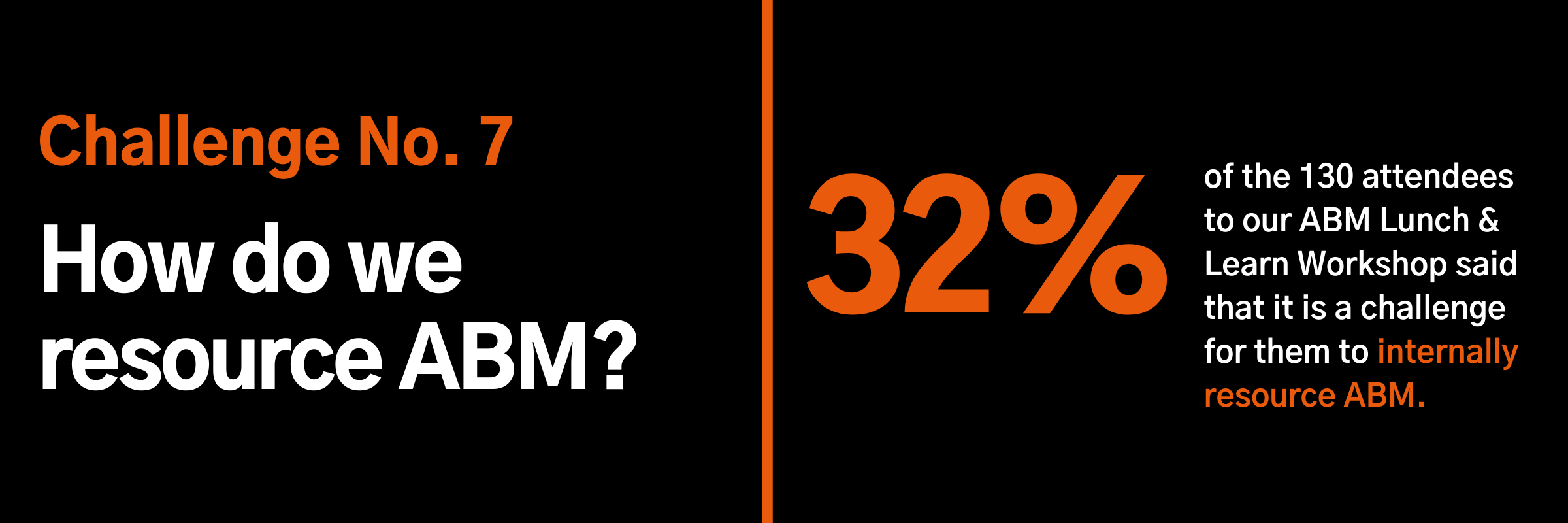
Fes: Firstly, ABM is all about prioritization. At the business strategy level and then all the way down to the execution level, it's all about prioritization.
You can't do everything for everyone.
Working with billion-dollar companies, everybody has a bandwidth limitation at some level depending on how your business is structured and how mature you are in your organization. There are limitations everywhere, right?
So you need to understand what those limitations are. You need to look at your strategy
and then you need to optimize. Ask the question ‘how do we create the biggest impact towards our goal?’ and also the ‘Three Rs’ of ABM; Reputation, Relationships, and Revenue.
Identify where the blockers are in those three areas.
And then you need to figure out where you can make the most impact.
Some clients that we talk to are very customer growth-focused other clients are focused
on new acquisition, and then you might have middle-of-funnel opportunities, so just prioritize a little bit around where the opportunity is to make the biggest impact in terms of supporting your business objectives, supporting the Sales team.
And then obviously you can work with external partners like agencies, technology partners, and you need to understand how they add value to your objectives.
Declan: Yeah, I think that's a great answer. I think just to add to that, we tend to find with our clients that they come to us for one of two reasons.
Either they have a resource issue, as we've mentioned here in the survey, or they have a knowledge issue or a combination of both.

So that's where we as an ABM agency may come in, we can help to move things quicker sometimes than companies could do themselves.
But I think ultimately the way we work is to work in partnership.
And obviously, I think the most successful partnerships that we have with our clients is where we've actually ended up training many of that team internally, to become ABM advocates and ABM champions.
And then we can kind of move into a more of a consultancy role, or creative role, or similar more specialized areas ABM while they do the orchestration.
We always say that ABM is a journey, and that's the same for the teams that are actually looking to run ABM.
Also the last thing I would say is try not to bite off more than you can chew.
So starting small - start with a pilot for five, six, seven, eight accounts as a start is always a good way.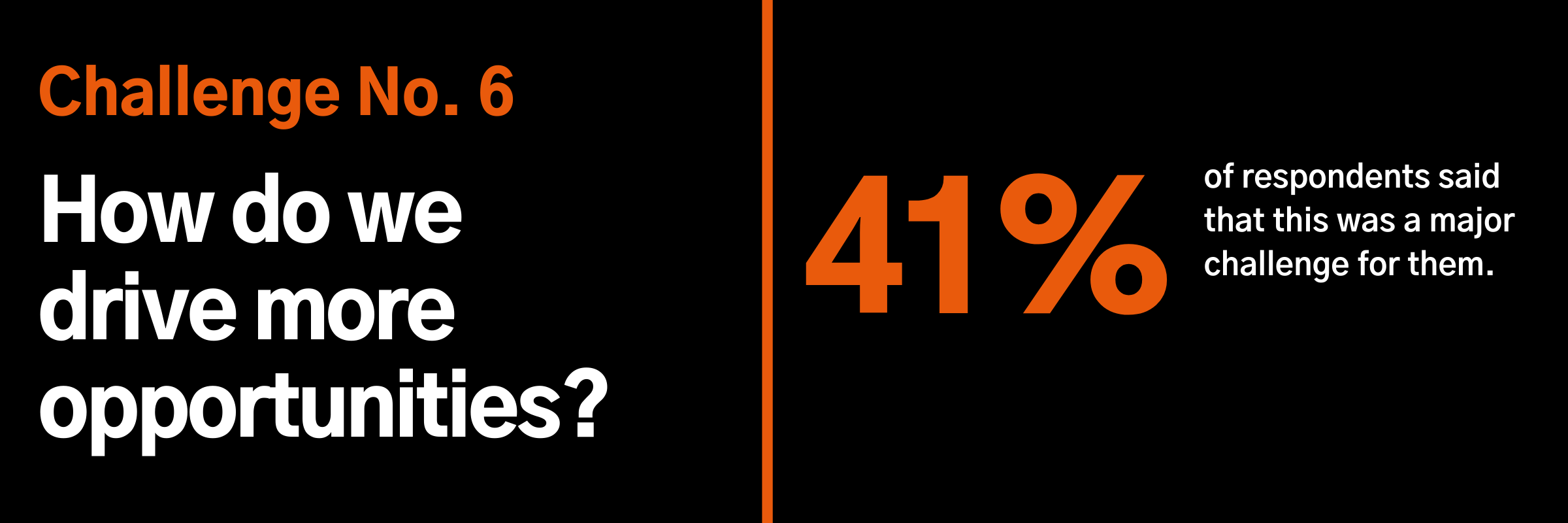
So how do you drive more opportunities?
Fes: I think for a lot of marketers, it may be a bit of a mindset shift with ABM and really understanding what these sales opportunities mean.
And also having spoken to a lot of Marketing teams, there has been a lot of push and demand internally around lead generation and that concept of leads.
And actually what the Sales teams value, is more meetings which convert into opportunities.
Meetings really start with conversations and it's all about how do you trigger more conversations with customers who are maybe not sales-ready, but in that buyer journey.
And starting conversations can happen in so many different ways in different channels outside of somebody downloading an ebook and that kind of thing.
That is all part of a broader campaign strategy and mix, that kind of content generation and showing thought leadership and building education within your audience is actually where I feel the tipping point is.
The opportunity development is that starting point - how do we start a conversation with this account or the teams in this account?
And that can come through a number of different channels. You can come through podcast strategy, it can come through social selling activities.
Often what we see is driving towards some sort of value exchange like a workshop offer, and that can unlock some missed opportunities in the pipeline because teams are very often focused on the bottom of funnel, high intent, conversion CTAs - like ‘book a demo’ inquiries,
which absolutely you should have in your strategy and funnel, but there are opportunities earlier in the programs where you can get engagement with buying teams when you're helping to educate them around the proposition, which is the very early stages of the opportunity cycle.
So that's what I'd be thinking about in an ABM context.
Declan: I just had two very quick points on that. Number one, I think the workshop you mentioned that many companies that we talk to tend to kind of lead with, you know, ‘contact us’, ‘book a demo’ - these are much more bottom of the funnel, higher intent.
And very often when we speak to them and we kind of do an audit of their Sales process, we find that they haven't really got a quality conversation starter, which is less ‘threatening’ and much more ‘we’d like to talk to your experts’.
So kind of bringing that kind of peer-to-peer play in with the workshop offer higher in the funnel, you'll actually end up building a bigger pipeline.
Then the last thing I would say actually is working really hard on the numbers in terms of looking at your data, looking at your engagement.
So if you've got demand gen on one side and then looking at which accounts would warrant going from a demand gen play into your ABM play.
We run this ABM framework where we're constantly promoting and demoting accounts - looking at which accounts in the One-to-many program warrant going into the One-to-few program based on the level of engagement, which would then accelerate the deal stages as well.
Fes: I think some of what we're talking about is really specific to Enterprise and where ABM sits with targeting Enterprise organizations.
This isn't so much of an issue when you have, you know, ‘freemium’ products, product-led growth strategy where lead generation absolutely makes sense, right?
So, you know, you need to understand the context of the strategy that you're running along into your products.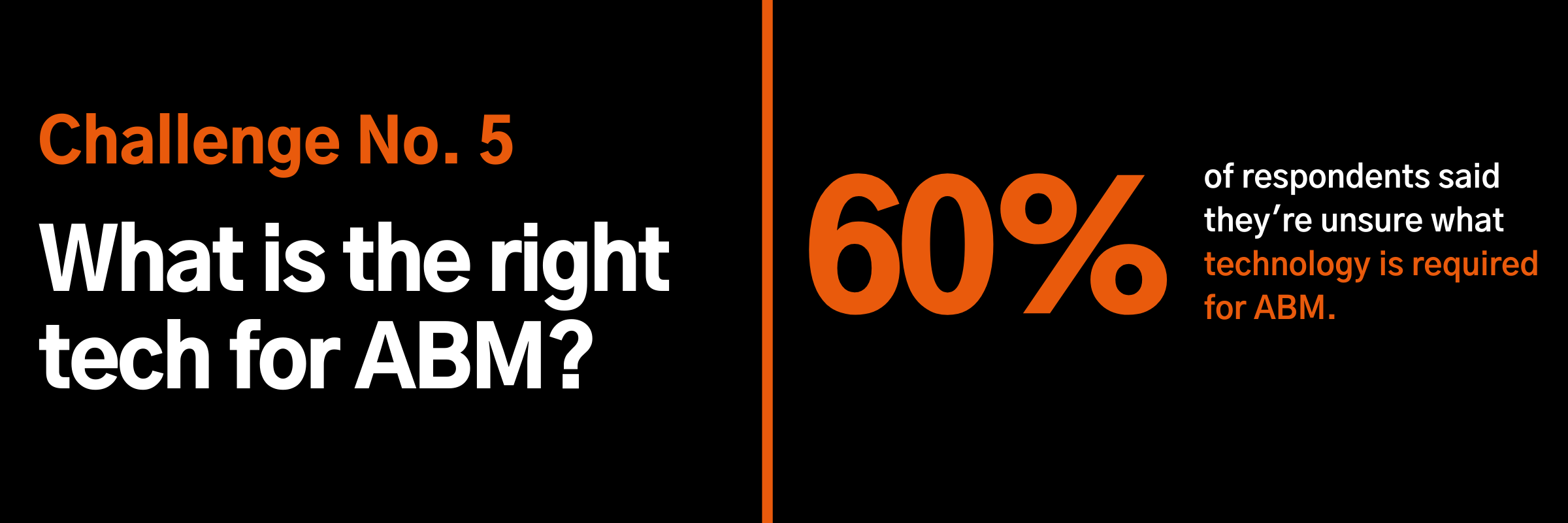
Fes: I love technology. I work in the technology sector. We sell to technology companies.
We work with some great technology partners.
But technology doesn't add value unless you have the right strategy, and then you can insert the right technology to meet those strategic goals.
It's great to bring in technology, but you need to understand where the key drivers are for that technology.
For example, I talk about the value of video in Sales and bringing in a video platform - you need to have some consideration for the Sales teams around perhaps a level of media training, how do you use video at different stages in the buyer journey from top of funnel to customer conversion and beyond.
So there's a number of different things that you can consider there. And working with the right stakeholders in business, having the right conversations and setting the right expectations is key for technology.
I always say, you put crap in, you're going to get crap out with technology. You have to have the right strategy and the right process to get the value out of it.
And we've done some great work in the Agency working with partners like Turtl and intent data partners like Cyance to get some real value out of those platforms for our own Agency marketing and our audience see that value all day, every day in the campaigns that we run and there are some great experiences that you can create.
But I know that you've done a lot of work looking at what their capabilities are and how to create that experience in those platforms.
Maybe you can talk about that.
Declan: Yeah, I think just my slogan is strategy first, technology second.
And I think if you go that way, lead with strategy first, then think about the people, processes and then technology will always follow after.
Fes: Pilots can mean different things to different people depending on the maturity, size
and shape of your organization.
Pilots for some companies can be very small and tactical and a pilot for other organizations is much more scaled, but in the context of their organization, it's still a small program, right?
So think about the pilot in terms of your organization, your maturity, what resources you have available to you.
Some companies have an amazing existing technology stack so you can take advantage of that in your pilot program.
Other teams are doing very rudimentary ABM activities just to build up their learning
and knowledge about the process and really building that process without a lot of technology.
There's loads of education out there, like the Let's talk ABM series and the other partners
are doing some great content.
And I think what I'm seeing is people are taking advantage of the resources out there and they're coming to our ABM Lunch and Learn session with some insights and understanding and then we just help them refine their thinking and whether they run a pilot with us or not, whatever, they've almost validated a little bit of their strategy before they start to implement.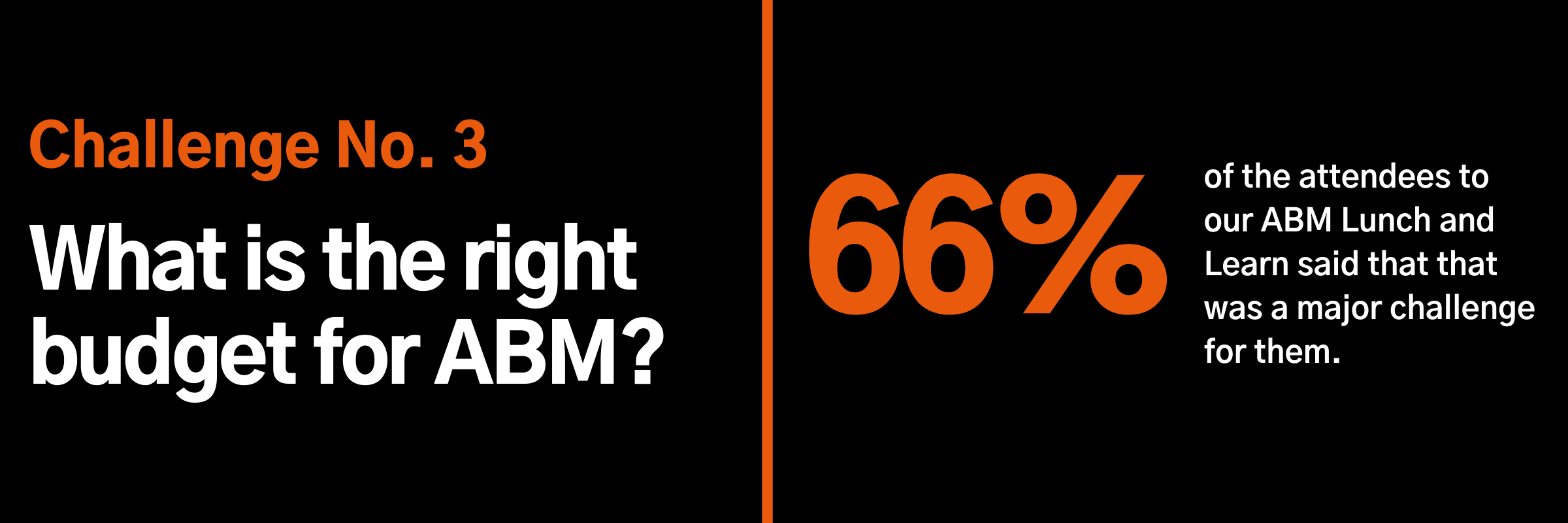
Fes: Again, this depends on the size and shape of your organization. But ultimately ABM is designed to engage, win, retain your highest value account.
So you need to set that expectation in the business from day one - we need to put on our best show for these accounts and we need to think about how are we going to add value to their business and what does it really take to get to that level of engagement with the teams we want to engage with at the Enterprise executive level.
So I think there are different ways you need to evaluate your budget across internal resources, people in teams, external resources, partners and technology, and think about how you can get the right blend of budget across the different areas to meet your objective.
The budget allocation will depend on your objectives, whether this is an existing customer strategy or new acquisition focus, for existing customers you might not need to spend as much, but you might want to go a bit broader internally within that account.
With net-new, you're going much earlier into the buyer journey so this is a completely different program that you need to run.
Declan: If we're going to give some numbers, some broad numbers around spend, there are two answers.
The fact is, if you're running it in-house, you’re going to have your personnel, your team, and you're going to have the technology that you may or may not add to your budget. You're going to have the media spend and the creativity, etc.
If you're using an agency for part or all of your ABM strategy, what kind of budget are we looking at, ballpark numbers?
Fes: Well, there are some numbers out there that talk about market level in terms of pilot programs that can be up to $300,000 for a program, but that might include your people, technology and content creation, media spend, all that kind of thing.
So, you know, you've got to be realistic about it.
Declan: And I think just to add to one final point about this, obviously, when we talk about ABM, we help our clients to understand whether ABM is a good fit for them or not.
And generally speaking, we kind of have this rule of thumb, which is, you know, you need to have an average contract value somewhere north of $30-50,000.
You need to be selling complex, long lifecycle purchase solutions into mid-market or enterprise, and you need to be trying to influence many people in the organization. It's not like just one person that buys your solution.
So bear in mind the return that you're looking to achieve needs to warrant the investments.
It's something that many people who launch ABM don't put enough time into and then they have the problem of justifying what they're doing.
Fes: There are essentially two types of reporting that you need to consider; Executive-level dashboards, and then operational dashboards.
So at the Executive level, we need to understand what's important to internal stakeholders
depending on your strategy and objectives. You need to design the right dashboard
that talks the right language, and that they can understand and see value.
At the operational level, again, you need to think about the ‘Three Rs’ of ABM (Reputation, Relationships, and Revenue) - getting down into the more granular details around how to track the engagement across those phases.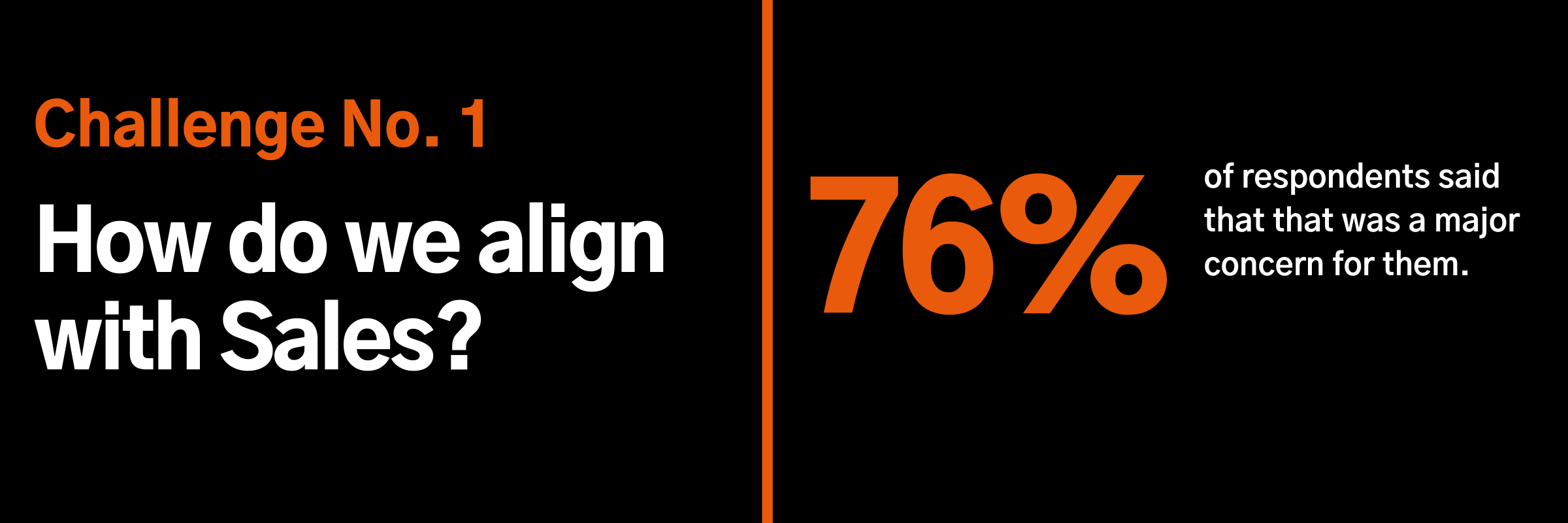
The number one concern that many people face when they're trying to launch an ABM strategy is around Sales, Sales teams, and enablement.
Fes: A few things really, find the advocates in the Sales team that are willing to work with you on the program and are interested in trying to do things differently.
I also think learning to speak the language of Sales is really important and talking about opportunities and how to start conversations, that's really key.
Aligning on the right objectives with the Sales team and agreeing what those objectives look like at the outset is key to this, and making sure that everybody's driving towards that goal as one team.
There are a number of different ways that you can do that depending on what type of Sales team you have in-house - SDRs with AEs, or full-funnel Sales reps, or whatever the structure of your Sales team is.
Understand where their challenges are, understand what the blockers are for them, understand how you can help them open the doors to conversations with their best accounts, with their top accounts.
- What can you do to pave the way?
- How can you build that from a marketing perspective?
- How can you create offers for customers that they'll engage with?
- How can you create content that follows up from a great sales conversation?
- What happens next after that?
So don't just focus on the top of funnel, think about the whole experience from a Sales perspective.
Declan: And I would just very quickly add a couple of things.
I would say, number one, with Sales you need to make the intangible tangible, so you need to show your Sales colleagues:
- What does the ABM journey look like?
- What's their part in that journey?
- What do they have to do as part of the ABM journey?
We create playbooks for our clients to help them show Sales that journey in terms of email templates, social media templates, showing them all the assets that are going to be created, showing them the account experience, showing them what each account is going to go through, and when.
I think also over-communicate with your Sales colleagues.
One message, one slack message, one email, one launch is not enough - do more than you would actually think is necessary because they've been very busy people.
They've got their own priorities, they're doing their own sales, they've got their own issues to deal with.
So over-communicate more is better than less and share success.
Success is contagious. People in Sales love to see success and so share successes, share early wins, share those milestones that you're going through on that journey with them, and you'll get them on board.
You'll find it becomes one team and then you look back and think, well, this has changed our business.
So there you have the top ten challenges that people face when it comes to launching an ABM program.
We hope you all found that useful.









